Tokyo National Museum: Samurai Armor from the Beginning
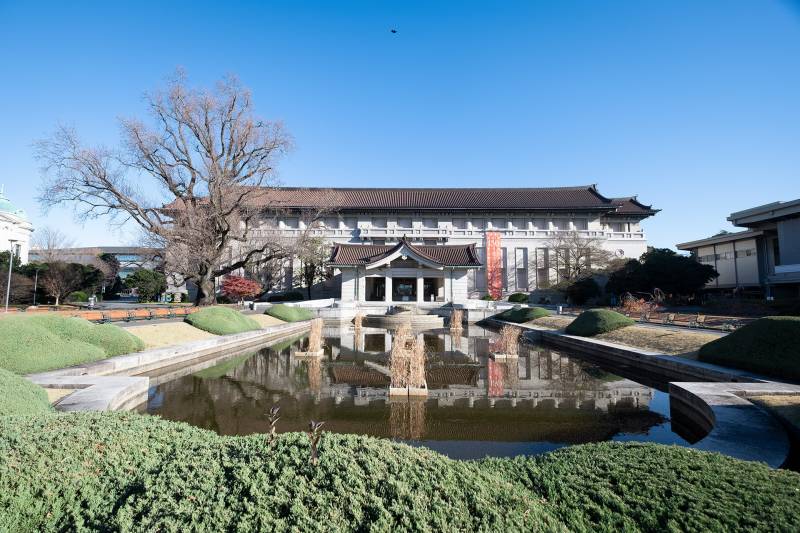
Tokyo National Museum
Medieval Japanese proverb
Blade tempered
Swords with iron claws
Knowing no mercy
The body is cut at an angle
Shredding... What a sorrow.
Saigyo (Sato Norikiyo) (1118–1190)
Military museums of the world. The National Museum in Tokyo is difficult to attribute to military museums as such. However, in its exposition a lot of attention is paid to the military stories ancient and medieval Japan. And this, in fact, was a time of continuous wars, so there are a lot of military history monuments in this museum, therefore, by visiting it - at least virtually - we can get a complete picture of how military affairs in Japan developed over more than than millennia.
So – today we visit the Tokyo National Museum.
And we begin our tour from the earliest time of Japanese statehood - the Yamato period (III century AD - 710). At that time, a real boom in barrow burials took place in Japan, so the time from the XNUMXrd century BC to the XNUMXth century is sometimes even called the Kofun era - after the name of the kofun mounds, which had the shape of ... a keyhole! Around them, the ancient Japanese placed a lot of ceramic figures - haniwa (“clay circle” in Japanese), depicting houses, boats, women, and ... warriors. They had such a kind of grave goods, not counting what was laid in the grave itself!
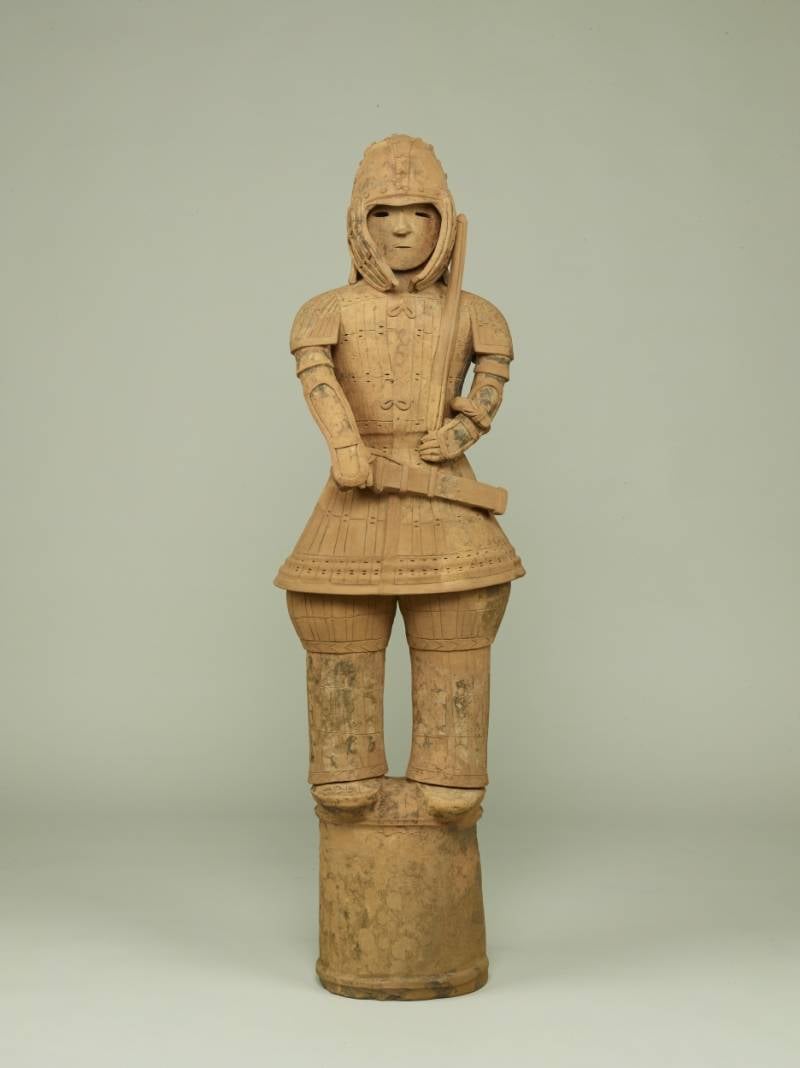
Kofun figurine depicting a warrior in armor
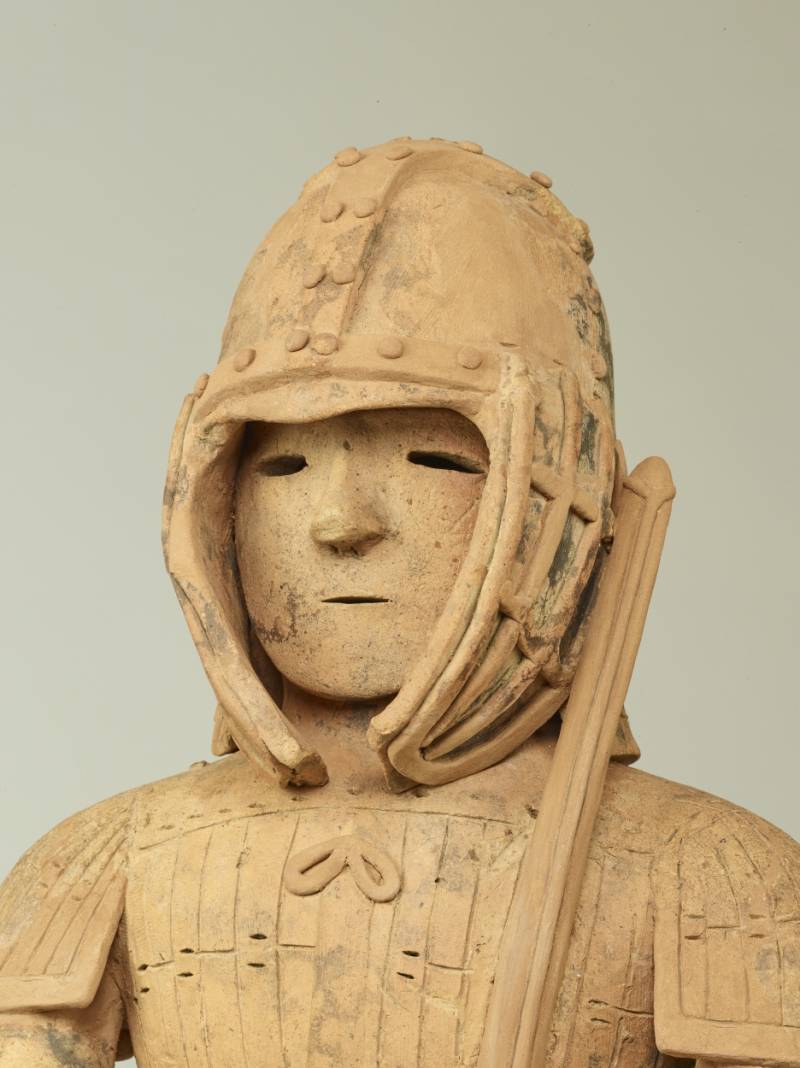
See how all the details are worked out on it. Everything is visible - both the rivets on the plates, and the knots of the shell ties!
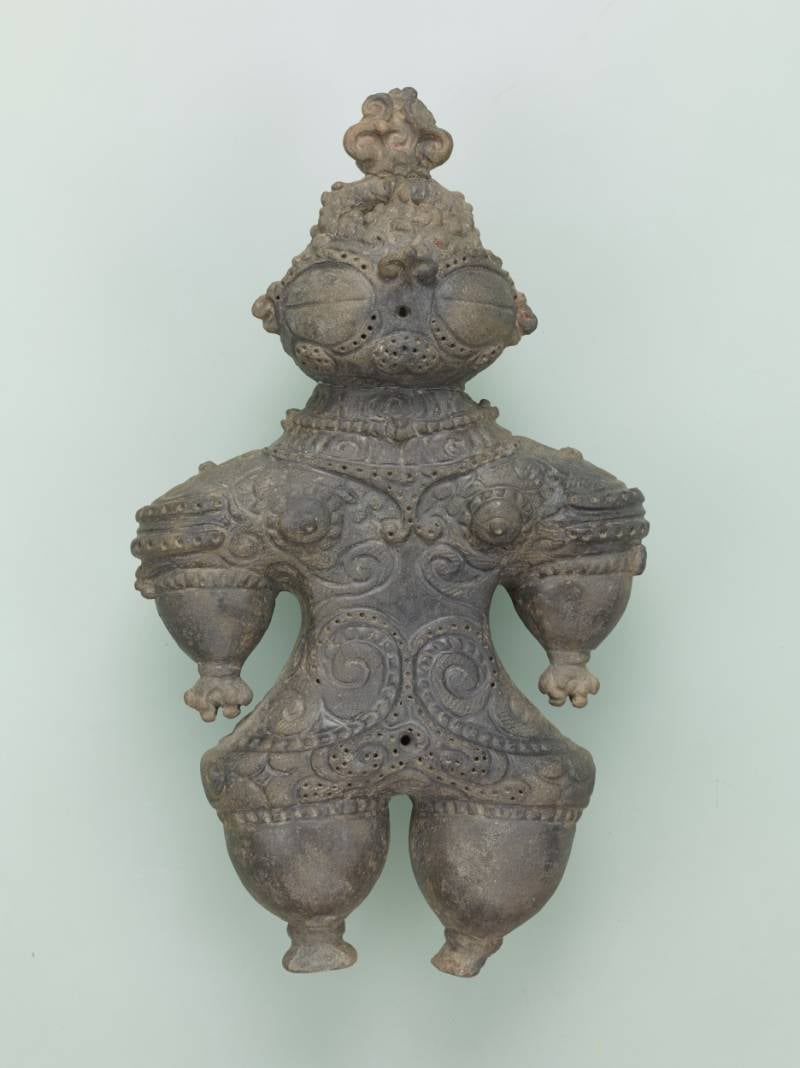
And here is a dogu (“a robe that closes with the head” in Japanese), but it should be clear to everyone that this is not a warrior, no, but ... an alien in a spacesuit who visited Japan at that distant time and left behind such a memory. A. Kazantsev in the novel "Faetes" described these "dogu" well, and where they came from ...

Iron swords of the XNUMXth c.
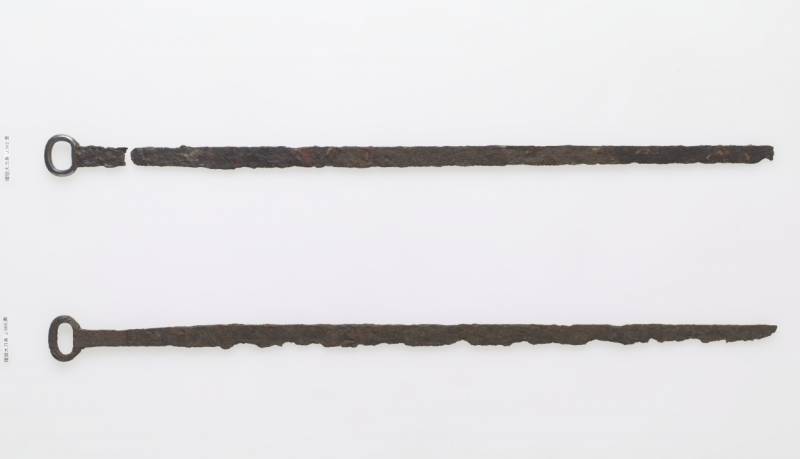
Iron swords of the XNUMXth-XNUMXth centuries.
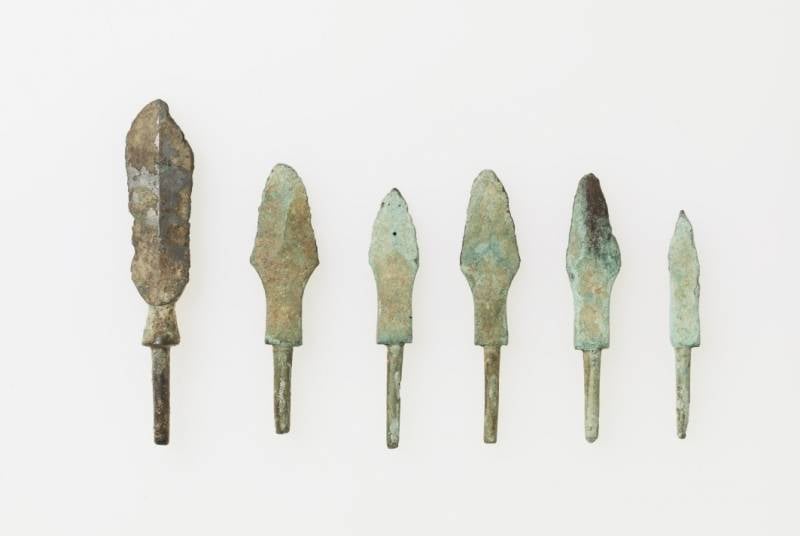
Copper arrowheads
The Japanese, we note, very early got acquainted with iron and learned how to make and weapon, and armor. Already in the XNUMXth century, a set of weapons of a warrior-at-arms included a helmet - shokaku-tsuki-kabuto - "butting ram", a metal cuirass tank-do and shoulder pads kata-yoroy.
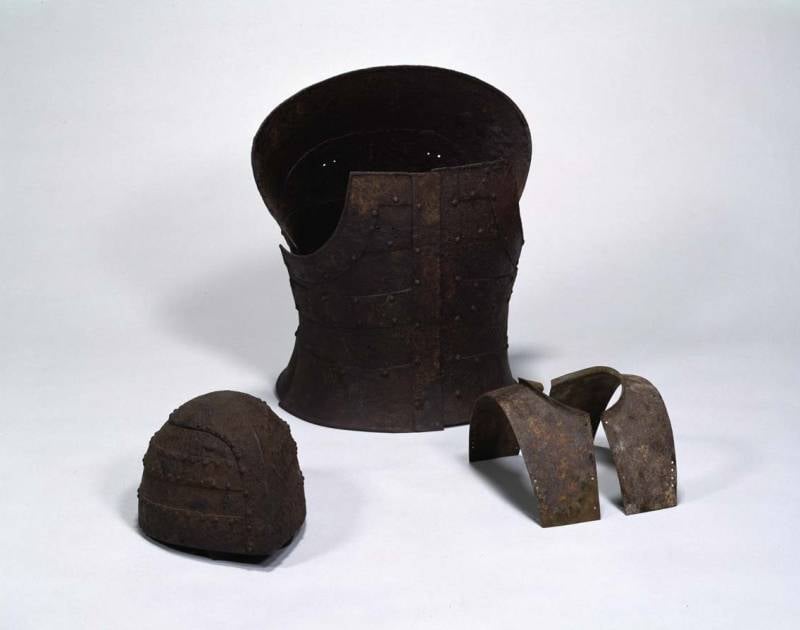
In this photo, just all these details of the full armor of the tank are presented. We have already seen this armor at the Metropolitan Museum of Art in New York. But there he was alone, without accompanying details. And here is the complete set, from left to right: helmet, cuirass, shoulder pads
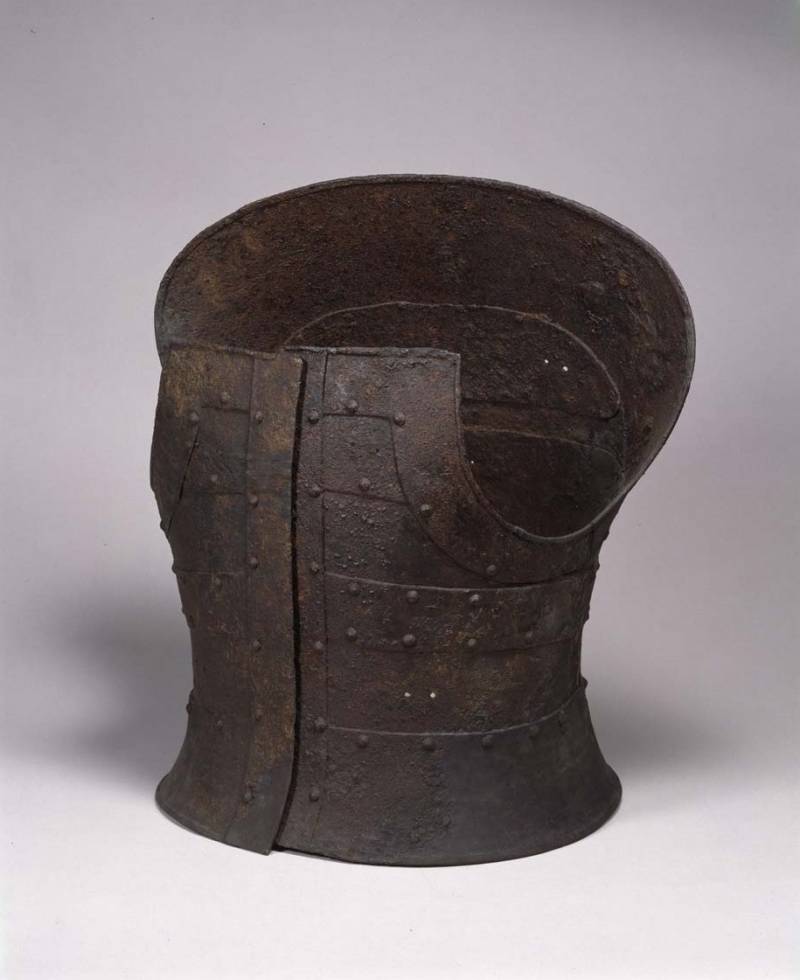
Cuirass close-up
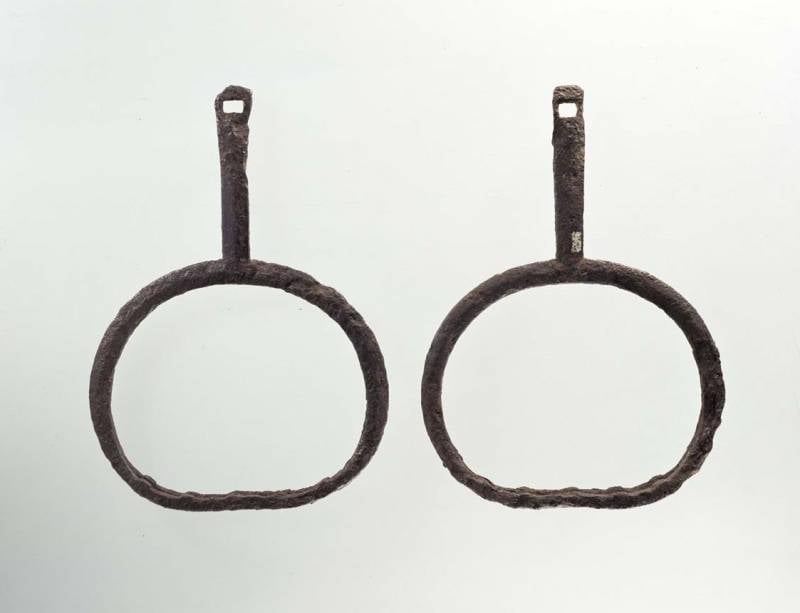
Stirrups
A huge role in the conquest of Japan by newcomers from the mainland - and the ancestors of the Japanese came to its territory from the Altai, since the Japanese language belongs to the Altai language group, had a chance to play a horse. The natives of Japan - the Ainu or Emishi (from the Ainu word for "sword" - "emus") were good warriors, but they did not know horses, while the newcomers used horse archers very widely.
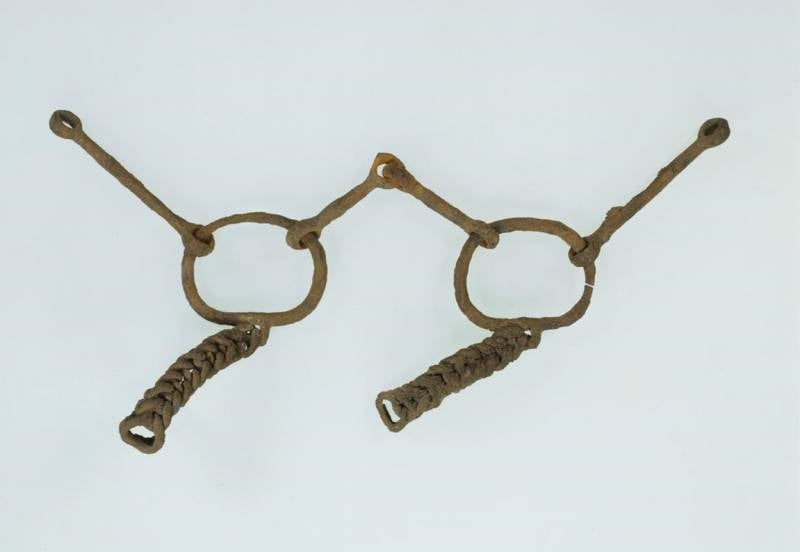
Horse bits, VI century.
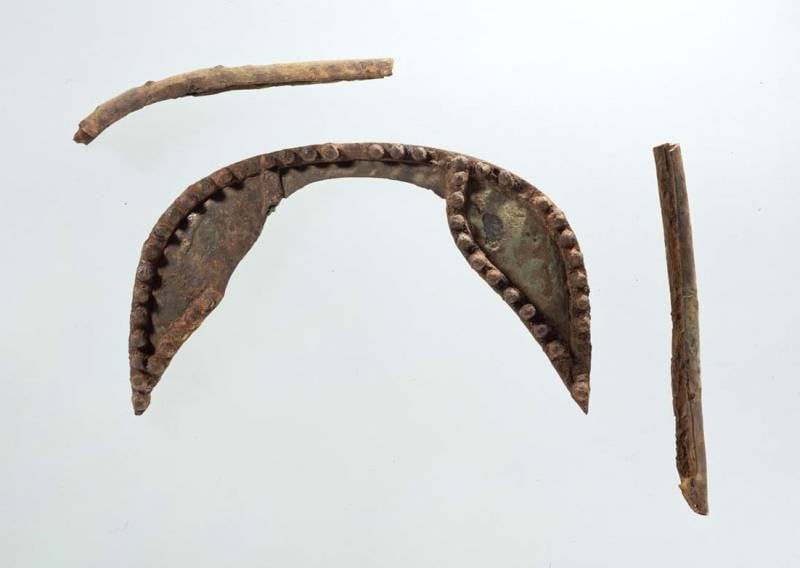
saddle pommel
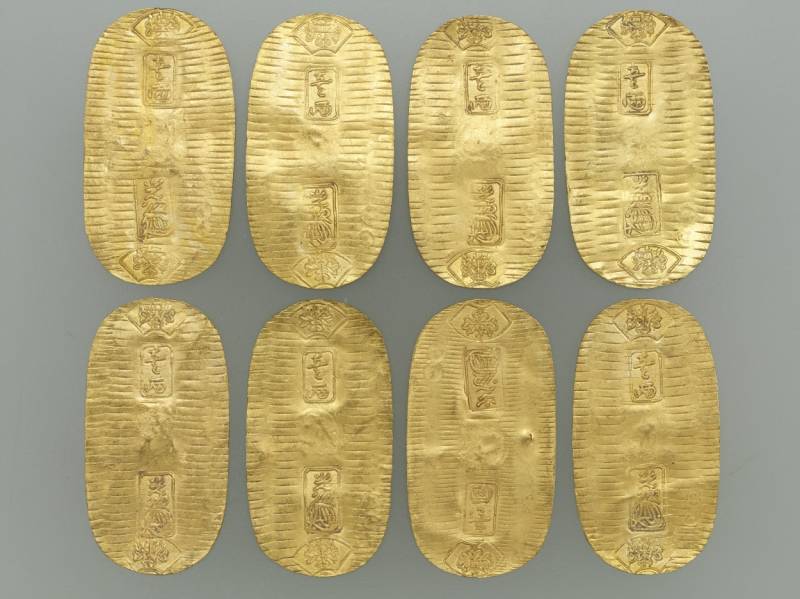
Japanese gold "coins" of the XNUMXth century. – boars
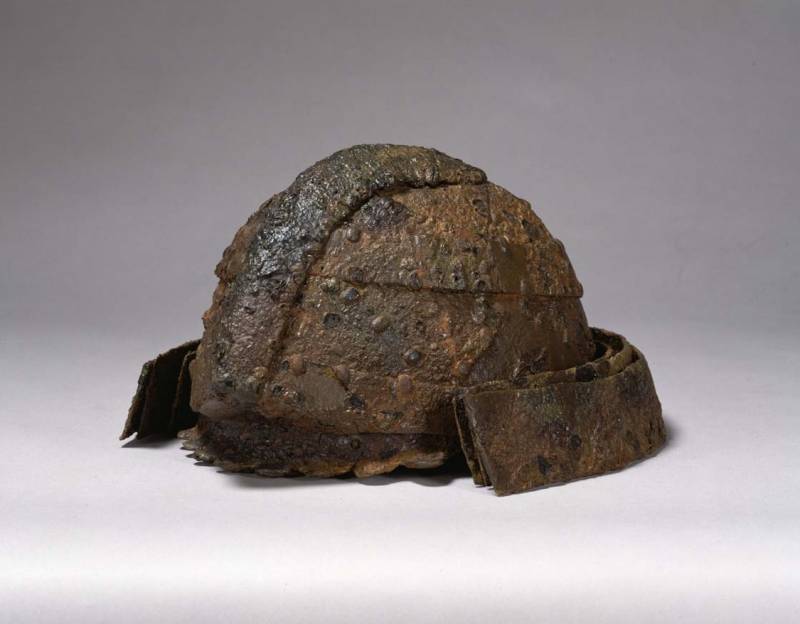
Helmet to the early armor of the equestrian archer o-yoroi, XNUMXth c.
Over time, the Japanese became like this: some soldiers guarded the emperor in the capital - they were eji ("guard men"), while others fought on the border - sakimori ("guardians of the borders"). It was customary to call the warriors bushi - "fighter, warriors." The owners of large estates also began to recruit their detachments of armed servants. And so they began to be called samurai (from the word "saburau" - "serve the master").
Gradually, the "armies" of the landed aristocracy became so large that they could already compete with the imperial troops, and the era of anarchy began in the country. It ended in 1192 with the victory of the Minatomo Yoritomo clan, who established the first shogunate in the country, that is, the dictatorship of the samurai and became its first shogun.
Already by the 1,80th century, the design of the first samurai armor o-yoroi was formed, but these armors, alas, have not reached our time. But on the other hand, the swords of the 2th century, which were exclusively the weapons of the rider, reached. And an auxiliary weapon. The main weapon of the samurai then was a large XNUMX-XNUMX meters long bow of an asymmetric shape, that is, it is convenient primarily for shooting from a horse!

Kamakura tachi rider's sword, XNUMXth century
Such a sword was hung from the belt on cords or chains. The handle is covered with shark skin and decorated with small bird figurines. This sword has pendants woven from copper wire - hyogo-kusari. Such swords were worn with the blade down, which was different from the later katana, which did not have pendants, and was worn with the blade up. Since the sword was very long, it was wielded by holding it with two hands.
The so-called “field swords” were also known - but-dati, so long that the samurai himself could not remove such a sword from the scabbard, and his servant or junior samurai had to help him, holding the scabbard with his hands from behind.
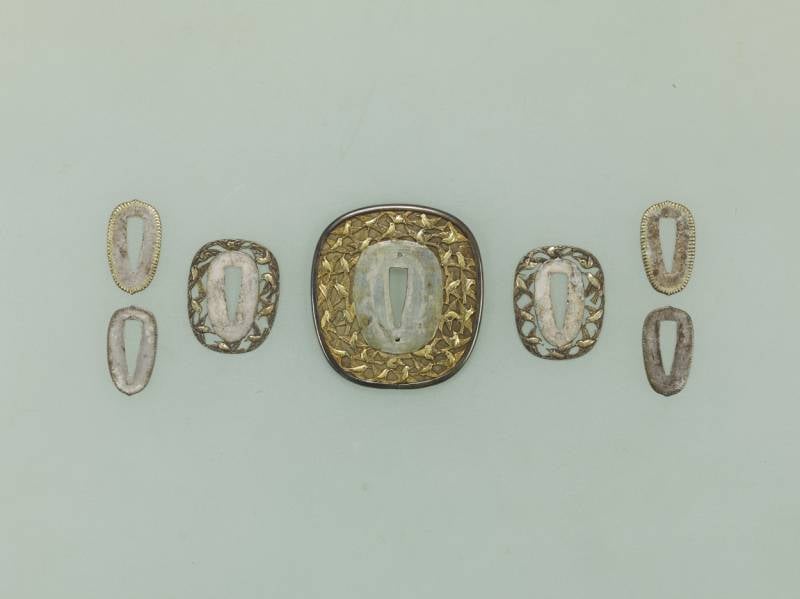
Garda - the tsuba of this sword (in the center). On both sides of it, the details of attaching the blade to the handle: from left to right - futi, seppa, tsuba, seppa, futi
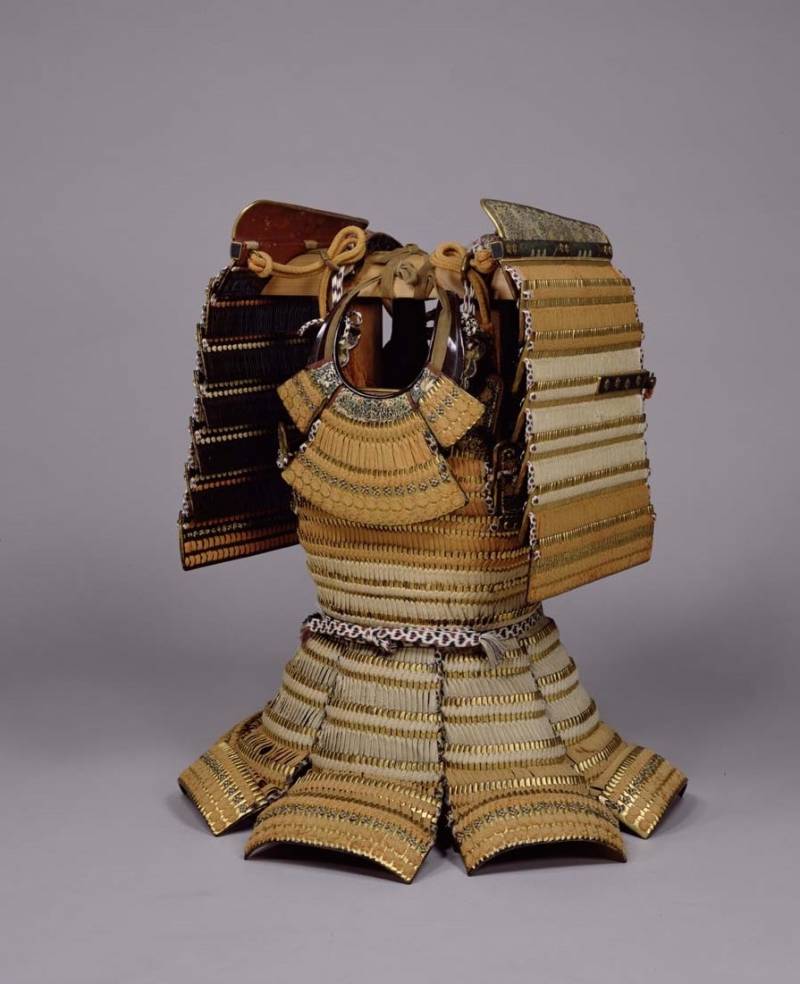
Do-maru armor with o-sode shoulder pads
Such armor replaced the heavy and impractical o-yoroi armor. They were also made from plates covered with the famous Japanese lacquer and tied with silk or leather cords. But they were tied on the back, and not on the side, like the o-yoroi and the lighter do-maru. Such armor was worn by samurai in the XIV-XVI centuries. during the Nanbokucho and Muromachi periods.
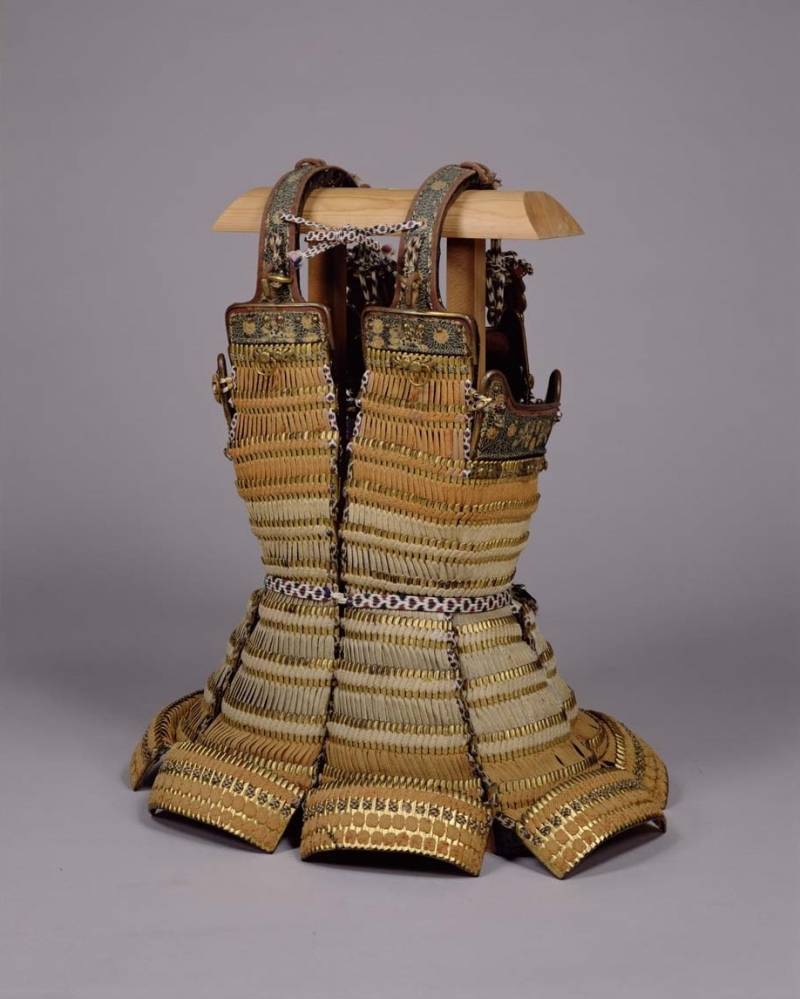
And this is how the armor looked from behind
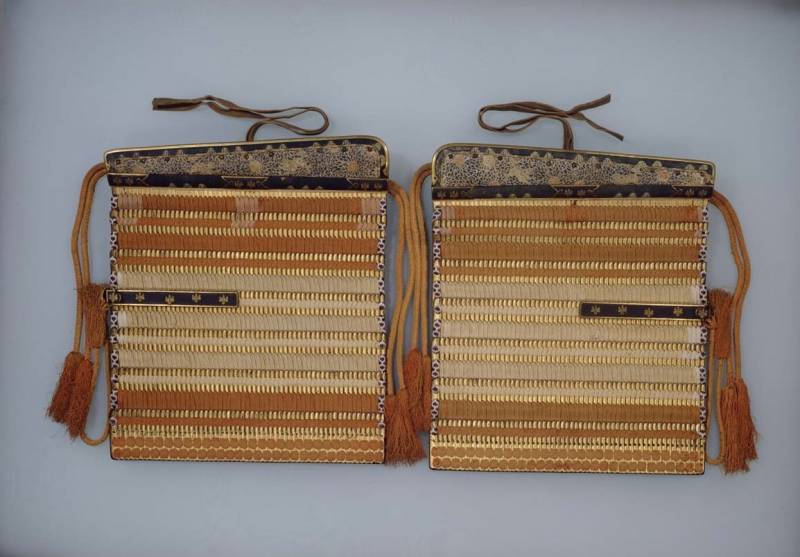
His o-soda - shoulder pads
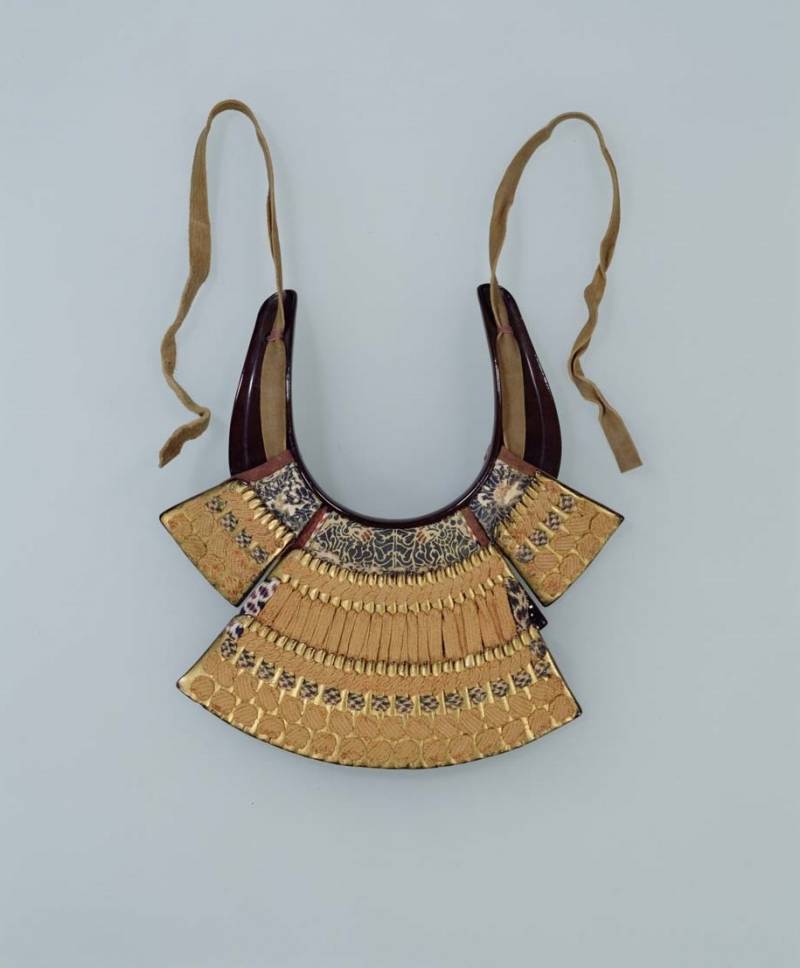
Plate necklace - node
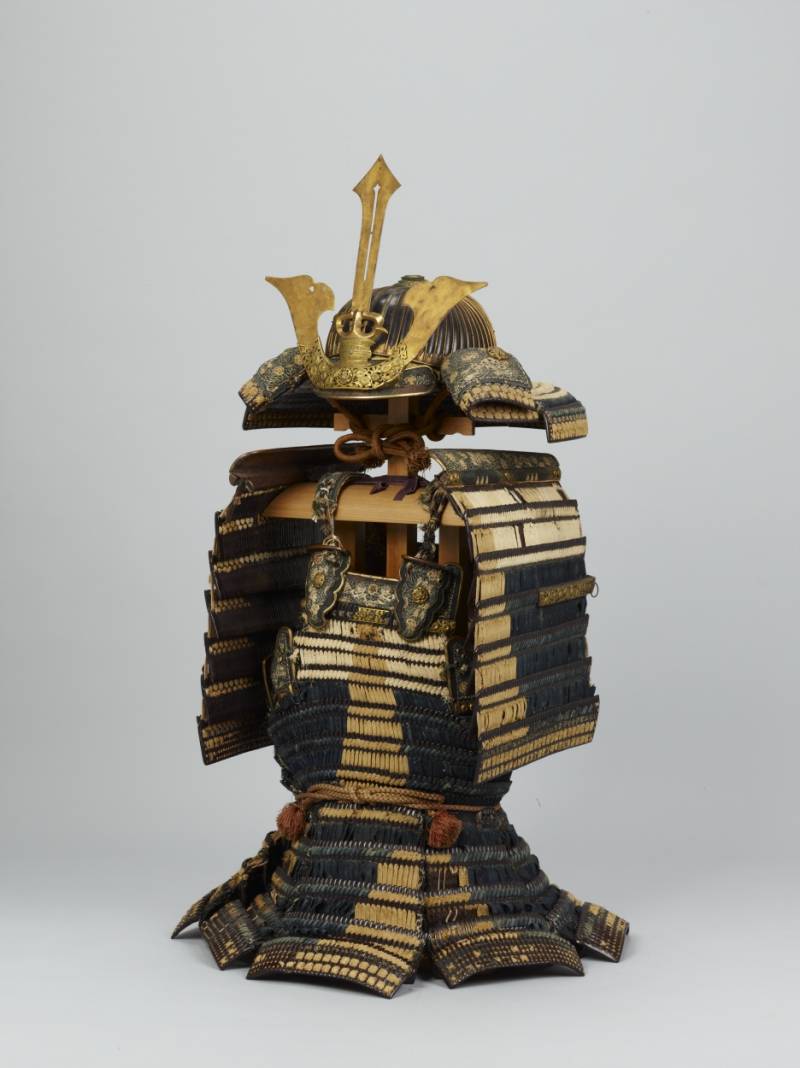
Another haramaki yoroi armor with large o-sode shoulder pads from the Nanbokucho era (1336–1392)
It has an original weaving with cords in the style of tsumadori-odoshi (“half corner”). And this armor, just like o-yoroi and do-maru, was assembled from iron plates with many holes into which strong silk cords were inserted.
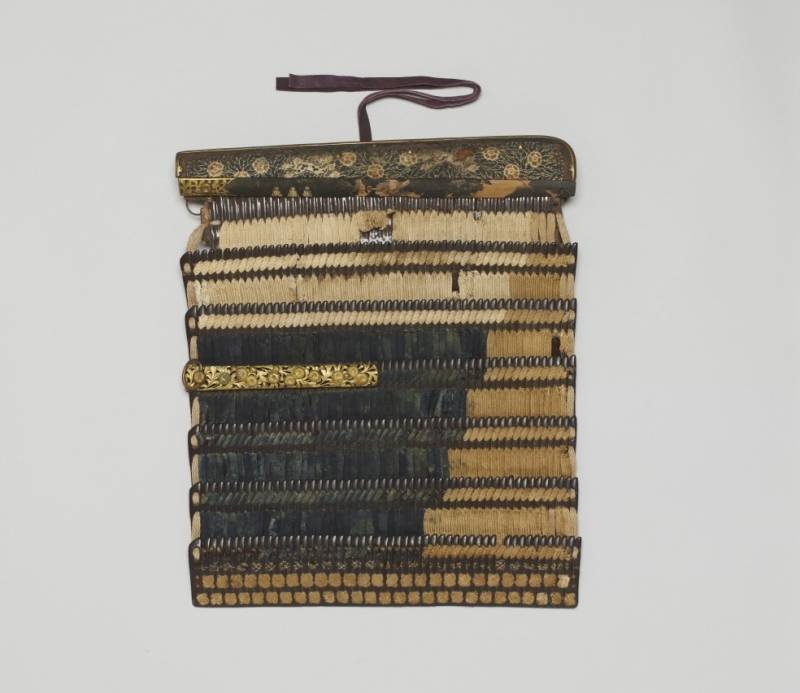
His pauldron
Note that Japanese armor should not be considered the height of perfection. For all their brilliance, they were not. Just like the armor of the Europeans, they could only be put on with the help of an outsider, that is, a wife or servant had to help the samurai. Further, the lacing in the rain, snow or fog got wet. This made the armor much heavier.
But the most unpleasant thing is if a samurai in wet armor suddenly finds himself in the cold. The cords then tightly froze, and the armor simply broke when trying to remove them. But even in the hot summer, it was necessary to carefully monitor that they did not stretch and periodically give the master to twist them and tighten the lacing.
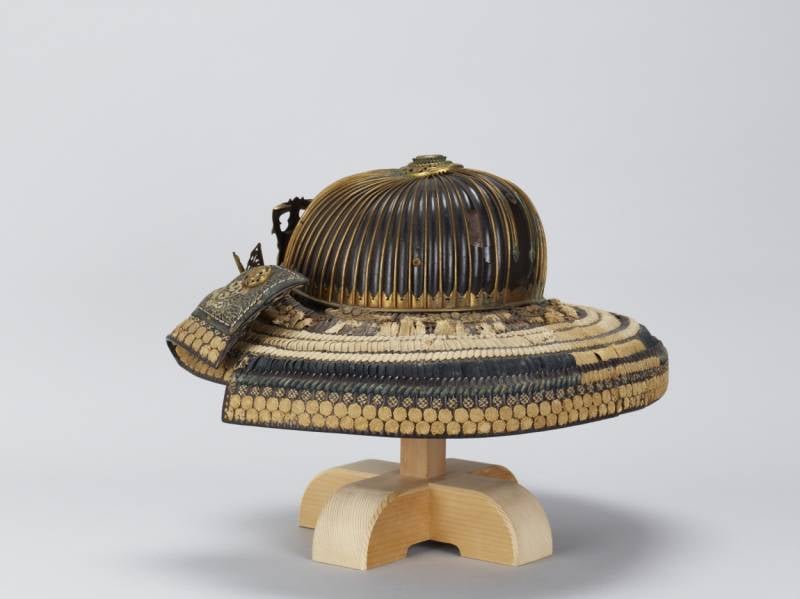
A typical helmet of the Nanbokucho and Muromachi eras is the suji-kabuto. Characteristic for this time was the protection of the neck - shikoro, like an umbrella. On suji-kabuto, the heads of the rivets connecting its plates are not visible!
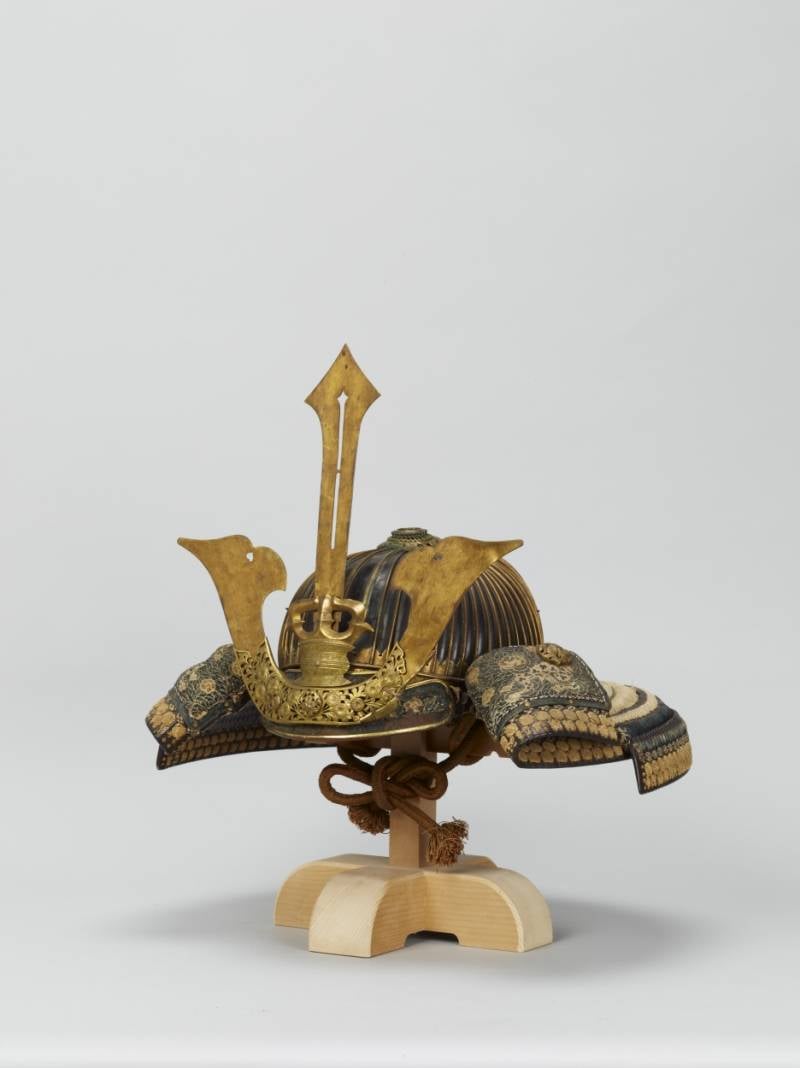
The same helmet with the “horns” of the kuvagat put on it. Such large horns were worn just in the Nanbokucho era, so it is quite easy to determine the age of an armor or helmet “by the horns”! Although it happened they were passed from father to son and beyond ...
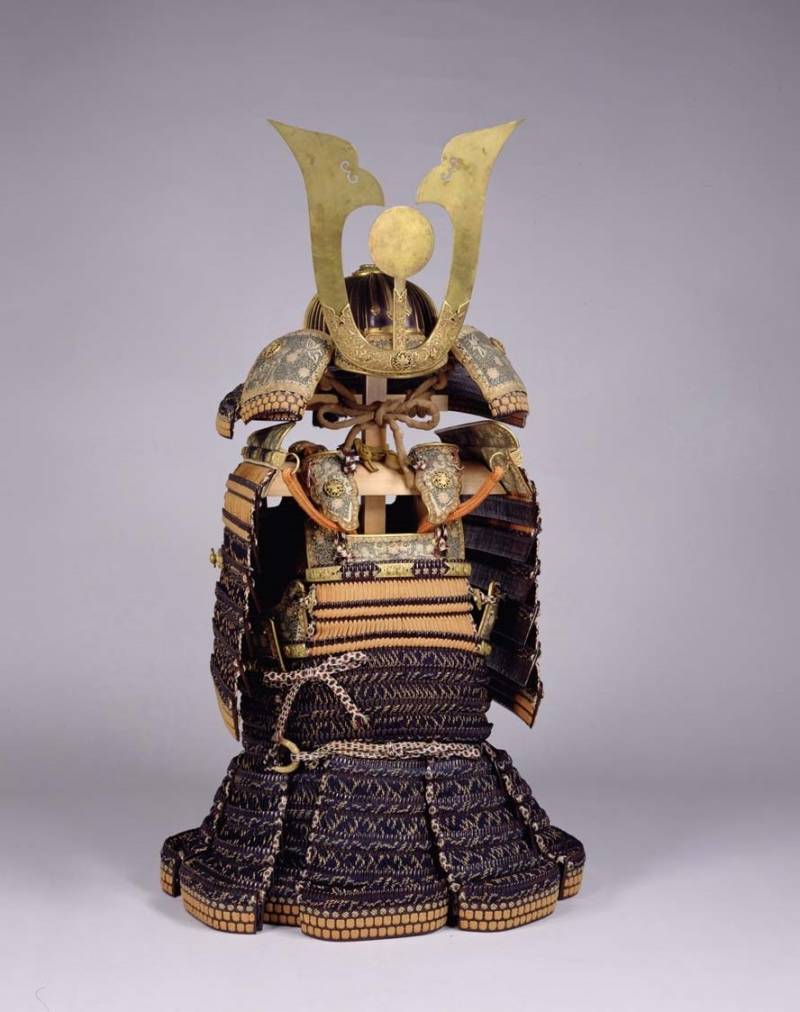
Another armor from the Nanbokucho era...
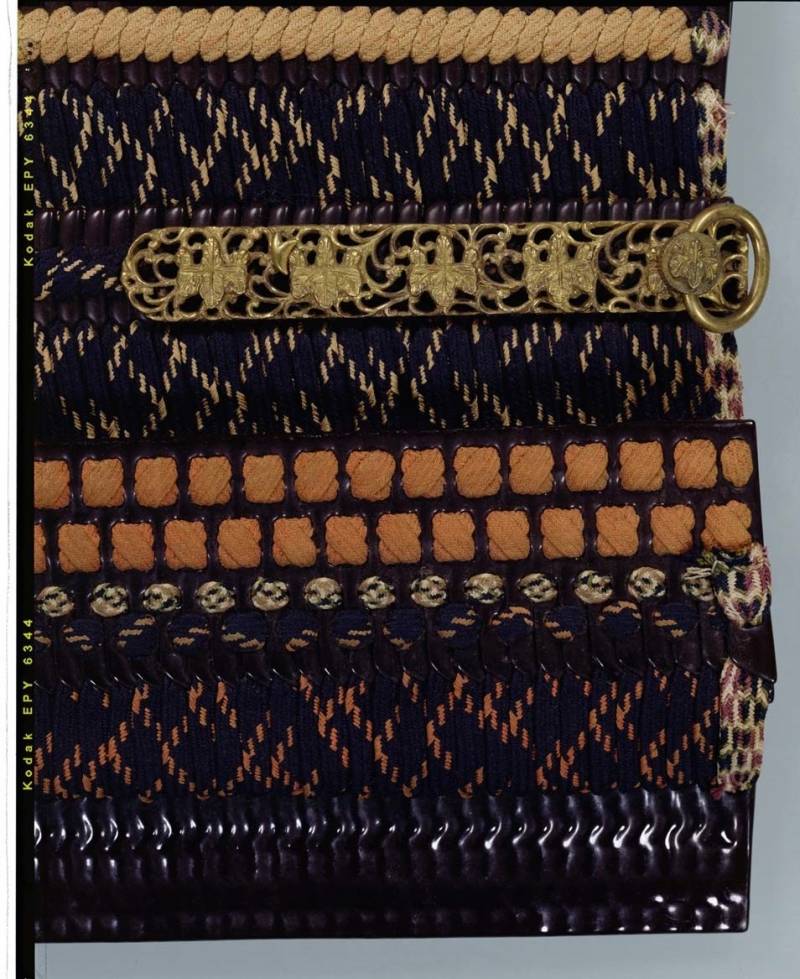
And o-soda from this armor
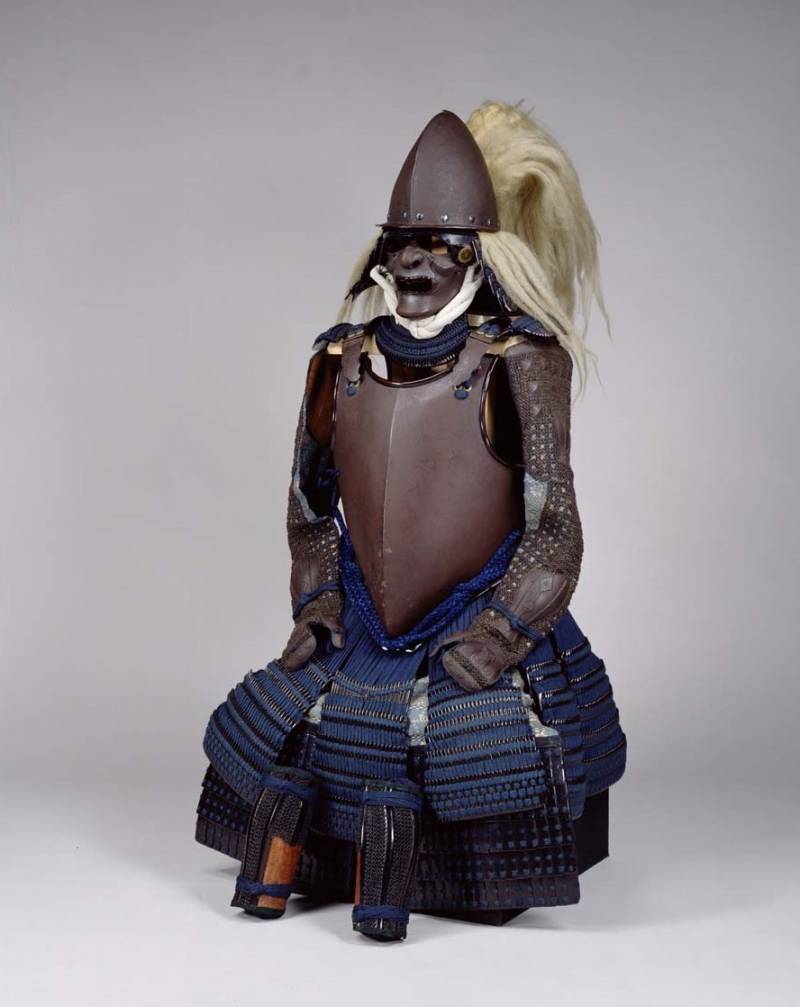
Tosei-gusoku armor owned by Sakakibara Yasumashi. Such armor appeared among the Japanese after the arrival of Europeans and the spread of firearms. Both the cuirass and the helmet are made in Europe. Local - "skirt" kusazuri, narushi - kote, haidate legguards, suneate leggings and somen mask
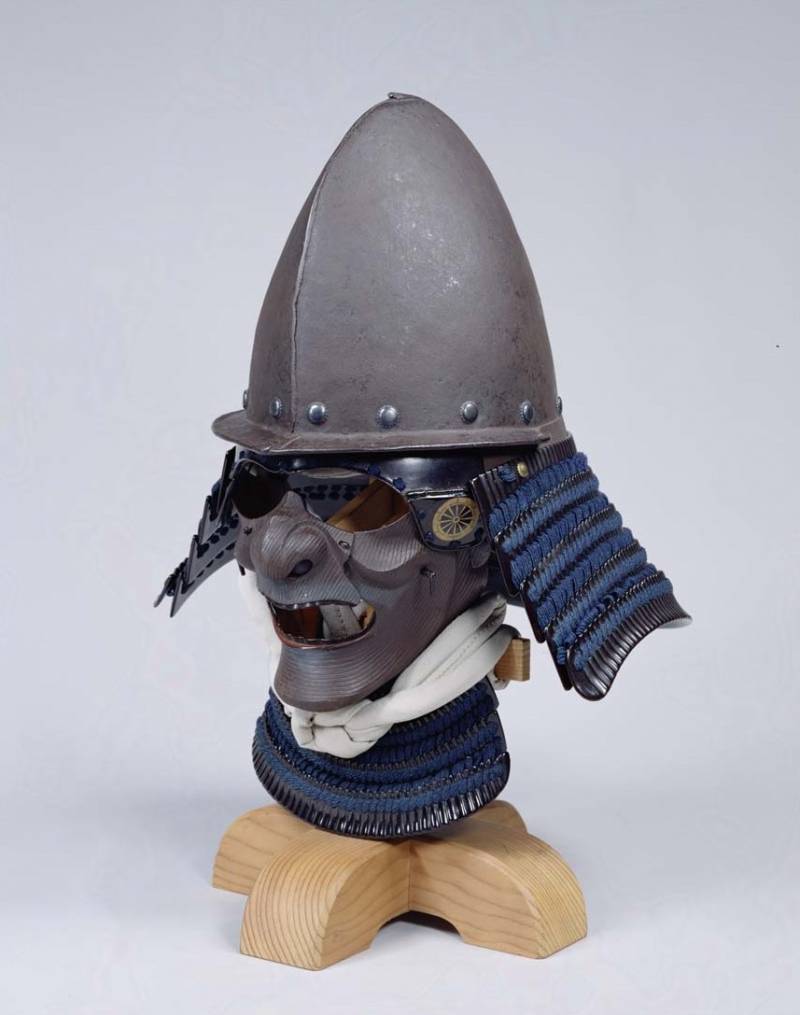
Helmet cabasset. European. Only the Japanese for some reason put them on backwards! Its fastening from kabuto-no-o cords is clearly visible. They were fastened on the mask for the “carnations” of otayori-no-kugi. Weaving is done with blue cords - kon-odoshi
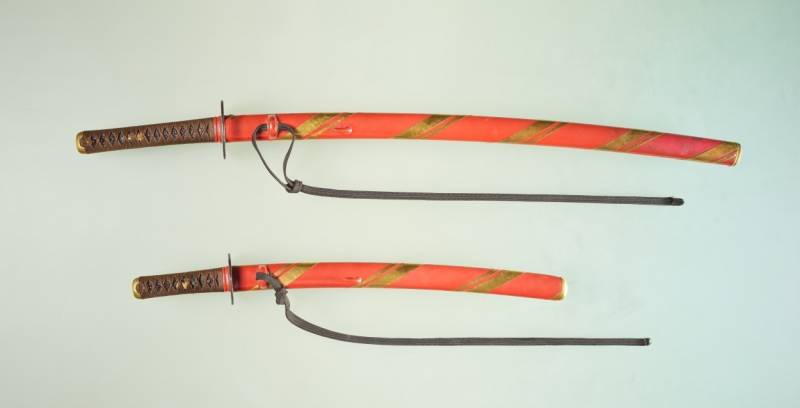
With tosei-gusoku armor, a katana sword and a wakizashi dagger (“small sword”) were more often worn. They were attached to the belt with the blade blade up, using the sageo cord, which was inserted into the bracket on the sheath of the kurikati. They were worn in pairs. The couple was called daisho - "big and small"
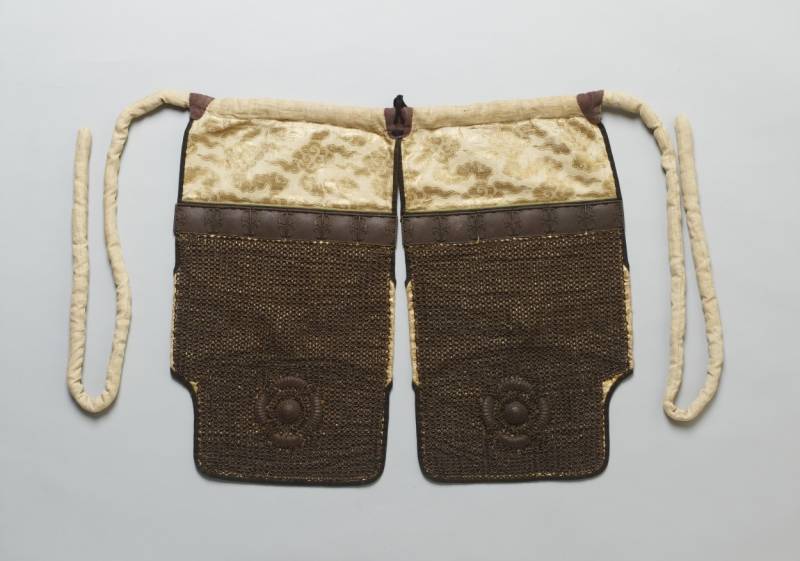
Legguards tosei-gusoku - haidate. Mail (kusari) sewn on a woven base - iyi, with ikad plates. Silk fabric, called donsu
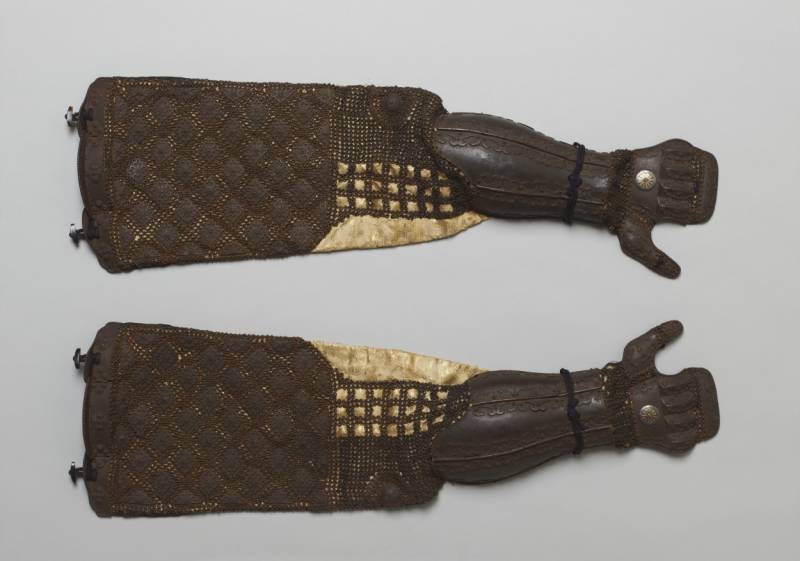
Kote protective sleeve: chain mail with iron plates sewn onto fabric and plate gauntlets with tekko bracers
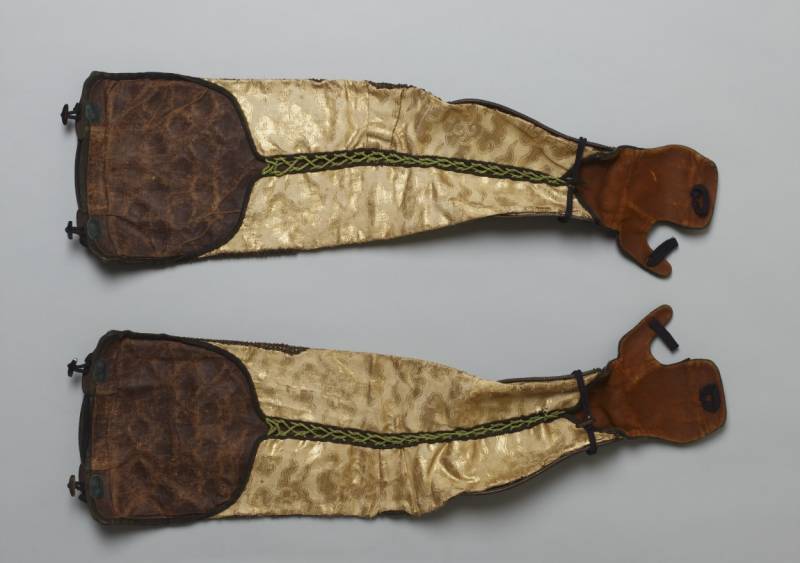
And this is what they look like from the inside...
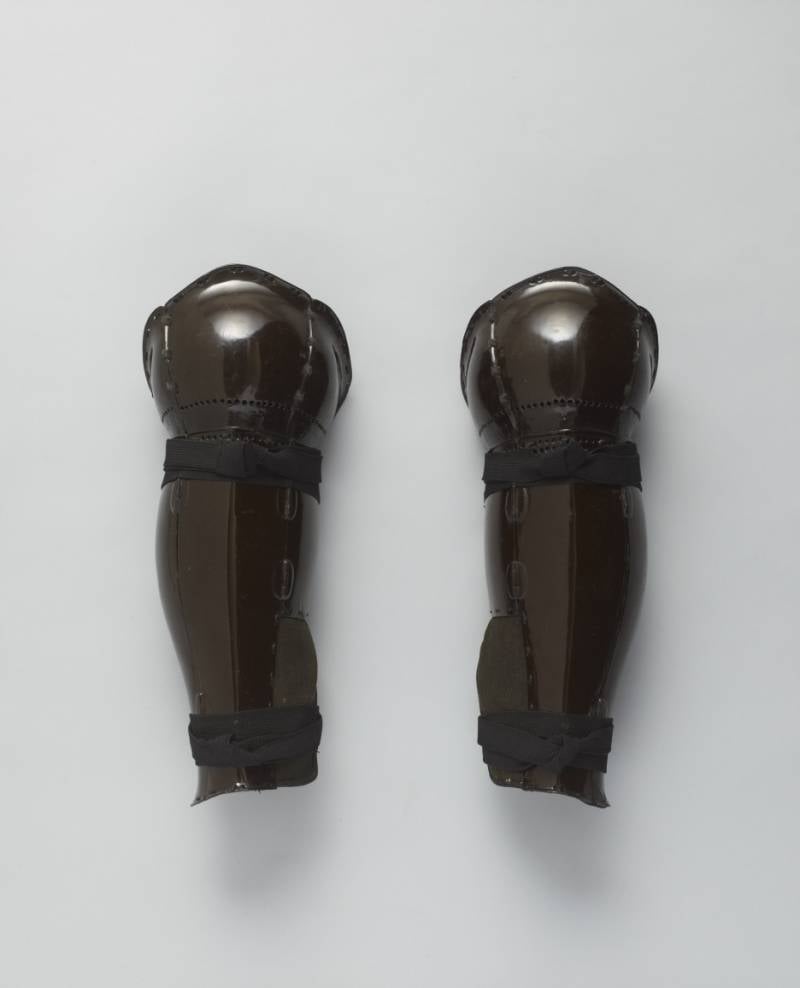
Suneate leggings wrapped with cords on the outside
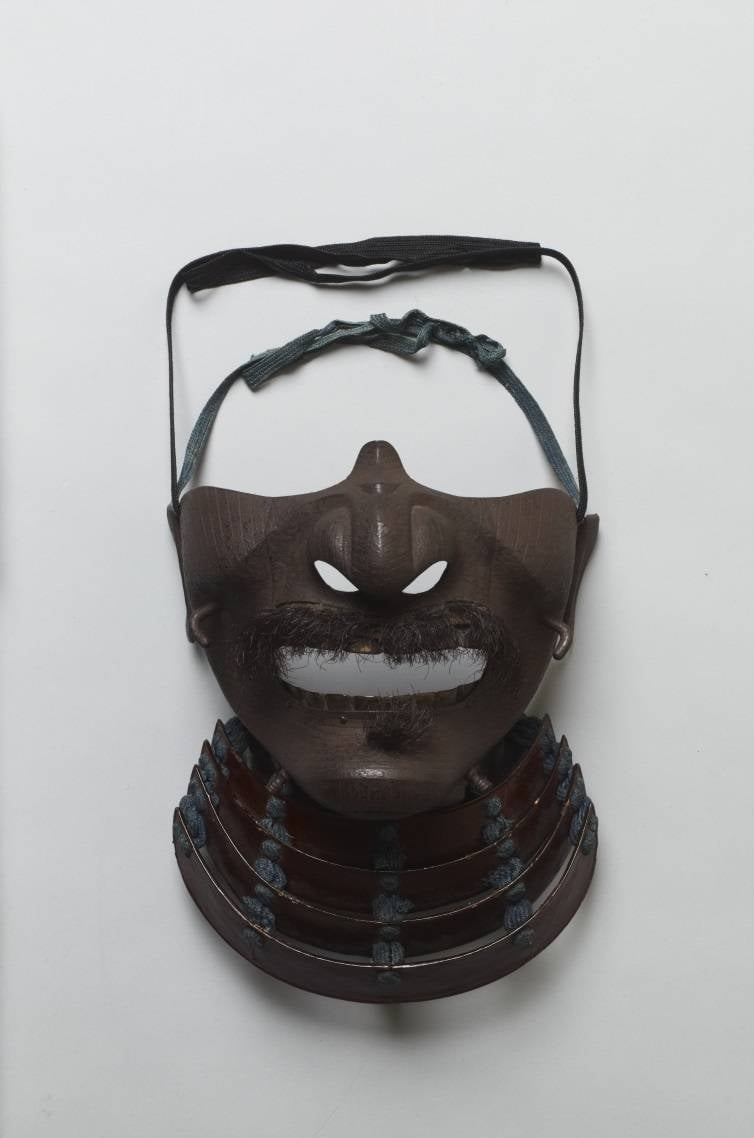
Mempo mask, XNUMXth century
It is clear that this is just an insignificant part of the museum's collection. And far from all of its exhibits we were able to show.
But it is quite possible that we will continue the study of samurai military equipment using expositions from other museums in the world, where there are also quite a few of all kinds of Japanese artifacts! See you there, dear friends!
Information